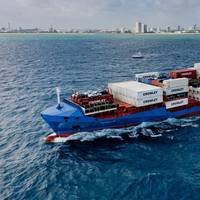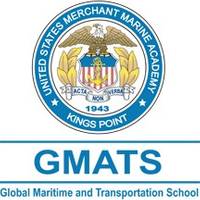European Shipowners Welcome EU Trade Agreements with Japan, Singapore
The European Commission presented trade agreements with Japan and Singapore to the Council to eventually be adopted. The European shipowners are very pleased that the first step towards the conclusion of these agreements has been taken. “With Japan and Singapore agreements Europe sends a strong message to the world in support of fair and regulated trade”, said European Community Shipowners’ Associations (ECSA) Secretary General Martin Dorsman. The agreement with Japan is the biggest bilateral trade partnership ever negotiated by the European Union. It will remove the vast majority of customs duties that cost EU companies exporting to Japan €1 billion a year. EU exports to Japan could increase by over one third.
Crowley Liner Services Earns AQUA Lane Certification

Crowley Liner Services said it has been certified by U.S. Customs and Border Protection (CBP) as part of the new Marine Port Terminal Operator (MPTO) designation, known as the AQUA Lane program, which essentially gives the shipper a “fast lane” for cargo operations by allowing incoming vessels to be pre-cleared by CBP. The validation comes after an a on-site inspections and vetting of Crowley’s Port Everglades terminal found the shipper to be fully compliant with program requirements and to have also implemented additional best practices, including enhanced due diligence security standards.
New Orleans Port Signs Mou With Cuba
Port of New Orleans Chief Operating Officer Brandy Christian joined Louisiana Gov. John Bel Edwards in signing a memorandum of understanding with Cuba on Oct. 4 pledging to expand trade and commerce opportunities between Louisiana and the Caribbean nation. The agreement also calls for joint marketing and information sharing efforts to meet those objectives. “The proximity and historical relationship between Cuba and the Port of New Orleans has us well-positioned should the trade embargo be lifted, and we are prepared to play an important role in trade when the time comes,” said Christian, who signed the MOU with Gov. Edwards and Director General Manuel Fernandez Perez Guerra of the National Port Administration of Cuba.
UK Port of Liverpool Receives C-TPAT Accreditation
Peel Ports operators of the Port of Liverpool, says it has been accredited by US Customs and Border Protection as a certified partner in the Customs-Trade Partnership Against Terrorism (C-TPAT) programme. The accreditation system validates ‘best in class’ security and detection capabilities aimed at identifying illegal cargo being transported to and from the US, helping to reduce the threat of international terrorism. All organisations accredited under the partnership scheme have demonstrated the highest standards in security processes and systems. As a result, inspections are less likely at C-TPAT member ports and accreditation provides a smoother transition for goods imported into the US.
Are our Ports Safe?

Two recent reports have raised alarms about the security of our ports and the cargo that enters them by containers every day. The top North American container ports handle more than 35 million containers per year bringing vital goods to U.S. homes and companies every day. Without this freight, our economy would be at a standstill. But one nuclear device placed into a shipping container could wreak havoc not just at the port it enters, but also with the surrounding population of our busiest ports such as New York/New Jersey, Los Angeles, and Long Beach.
Port Launches World Trade Partnership on National Maritime Day
Trade partners in Ventura County joined forces at the Port of Hueneme to kick off a program celebrating World Trade Month. The Port timely hosted this event on National Maritime Day. Participating were representatives from the U.S. Department of Commerce, the U.S. Foreign Commercial Service, the District Export Council of Southern California, the Economic Development Collaborative of Ventura County and the Small Business Development Center the announce a robust partnership under the World Trade Center of Oxnard. The launch of this partnership promises to build strategic networks with the business community and economic development teams to create new avenues for businesses to tap international markets.
The Hearsay Portal: part 1 of 2

Dr. Jim Giermanski (Chairman, Powers Global Holdings, Inc.) and Chris Giermanski (Director of International Operations, Transportation Services, Inc.) weigh in on the balance between facilitating trade and guaranteeing cargo identity and quantity - and what CPB needs to do to achieve just that. Modernizing the flow of Customs data and improving security began many years ago. One aspect of this modernization process in the United States was the creation of the International Trade Data System (ITDS), a product of Vice President Gore’s National Performance Review in 1995.
GMATS Announces New Curriculum

GMATS to expand global supply chain and maritime security curriculum. As a foundation of the Global Maritime and Transportation School's expanding Global Supply Chain and Cargo Security curriculum, the Fundamentals of Importing and Exporting is an essential two-day course that will give the student a basic understanding of importing into and exporting out of the United States. This course is designed to provide an awareness of the many regulations, laws, processes, and principles involved in global trade, and from the perspective of the United States.
Customs Proposes New Cargo Rules
U.S. Customs and Border Protection (CBP) published on January 2, 2008 a Notice of Proposed Rulemaking (NPRM) requiring importers and carriers to electronically submit additional information on cargo before it is brought into the United States by vessel. The Security Filing, also known as “10+2,” is another step in the Department of Homeland Security’s (DHS) strategy to better assess and identify high-risk shipments to prevent terrorist weapons and materials from entering the United States. “The Security Filing will improve CBP’s ability to target high-risk cargo by identifying actual cargo movements and improving the accuracy of cargo descriptions,” said CBP Commissioner W. Ralph Basham. This initiative strengthens cargo security by making CBP screening more efficient and effective.
New Products: Marine Security Systems
The USCG's new Defender Class craft from Safe Boats will be powered exclusively by twin Honda BF225 4-stroke outboards. The Hondas can propel the new 25-ft. (7.6-m) Response Boat - Small, or RB-S as the Coast Guard refers to it through 30-mph winds and 6-ft. seas. The BF225s will provide a top speed of over 45 knots allowing the Safe Boat reaches plane in less than four seconds. Its marine-grade 5086 aluminum hull with integral, sealed air chamber and polyethylene, non-deflatable foam collar make the craft one of the safest boats on the water. The RB-S features an all-welded, self-bailing deck; insulated and heated full cabin; upper spotter windows; port and starboard sliding doors; marine electrical cable; stepped transom; and locking long gun storage.
Trailer Bridge Accepted as a Partner into C-TPAT
Trailer Bridge, Inc. has been accepted as a certified member of the U.S. Customs Service's Customs-Trade Partnership Against Terrorism (C-TPAT) program. U.S. Customs Service granted the approval on October 6, 2003, following a detailed review of Trailer Bridge's Supply Chain Security Profile Questionnaire. C-TPAT is a joint initiative between government and business designed to protect the security of cargo entering the United States while improving the flow of trade. Through C-TPAT, the U.S. Customs Service is asking businesses to ensure the integrity of their security practices and communicate their security guidelines to their business partners throughout the supply chain.
Port Security Initiative Enters Phase Two
The Strategic Council on Security Technology announced the global rollout of Phase Two of the Smart and Secure Tradelanes (SST) initiative. In the last year, SST has become the largest cargo security program in operation, helping global shippers to automatically track the location and status of containers while creating a system to detect and report container tampering. The second phase of SST focuses on further expansion of the global network, extending operations, shipments, and integration into existing supply chain systems while incorporating new technologies such as sensor-equipped smart containers into global supply chain systems. Smart and Secure Tradelanes (SST) is an industry-funded supply chain security and efficiency initiative.
Government Update: U.S. Manifest Presentation Requirements
By Dennis L. The United States, like all other nations, has required from its founding that manifests of imported cargo be filed with its Customs agency. Traditionally, the manifest was filed (or "presented") when the ship arrived in port. Official entry was not completed and cargo could not be unladed until the manifest was presented. This process was drastically reworked following the horrific terrorist attacks of September 11, 2001. The U.S. Customs Service, since reorganized into the Bureau of Customs and Border Protection (CBP), demanded that the information be provided earlier and in greater detail. On October 31, 2002, Customs…
Feature: Secure Seas, Open Ports
As new international and domestic regulations regarding shipping security enter force, the focus is not simply on security, but also on maintaining a healthy flow of commerce to keep the U.S. and world economy humming. U.S. Homeland Security Secretary Tom Ridge recently announced the implementation of new security measures designed to build upon the layers of security that are already in place at the nation's ports. The new measures, required by the Maritime Transportation Security Act, add additional security protections to every port in the United States. Port and vessel protection continues to remain one of the Department of Homeland Security's highest priorities.
GOVERNMENT: Terrorism Threat and the Immediate Reaction
by Dennis L. When the federal government began examining United States vulnerabilities in the days following the horrific terrorist attacks of September 11, 2001, it quickly became apparent that significant weakness existed on the U.S. maritime borders. Many, but not all, of these weaknesses were systemic and derived from both the U.S. open society and the procedures underlying modern maritime commerce. The goal quickly became to reduce the risk of maritime terrorism while not fundamentally altering the efficiencies of the commercial system. It was quickly realized that the threat to the maritime sector consisted of two distinct types: explosives and other contraband being shipped as cargo (particularly in a container) and the ship being used as a weapon…
Crowley to Receive Approval to Participate in C-TPAT
Crowley Liner Services has received word that its C-TPAT application, Memorandum of Understanding (MOU) has been approved by U.S. Customs. This approval makes Crowley one of the first ocean carriers to be enrolled in the U.S. Customs Service’s new program, Customs-Trade Partnership Against Terrorism (C-TPAT). The program, established as a result of the attack on the United States on Sept. 11, is designed to develop a more secure border environment by improving the security for the transportation of passengers, crew conveyances and cargo throughout the commercial process. To get to this point of acceptance, Crowley has completed the MOU and submitted the "Sea Carrier Security Profile Questionnaire" which outlines Crowley's full security plan to U.S. Customs.
The 5% Myth
U.S. Customes and Border Protection issues a release to try and dispel what it calls common myths regarding container inspection. 95-percent of the containers that come into the ports are not inspected. · The 95-percent figure is misleading and falsely implies that we do nothing to inspect cargo containers arriving at our seaports. We use intelligence to review information on 100 % of cargo entering our ports, and all cargo that presents a risk to our country is inspected using large x-ray and radiation detection equipment. · Following 9/11, the Administration developed and implemented a smarter strategy to identify, target, and inspect cargo containers before they reach U.S. ports.
Government Update: Cargo Security Strategy
The U.S. Department of Homeland Security recently released its draft White Paper on a National Cargo Security Strategy. The Department is seeking stakeholder feedback. The White Paper is a long-belated and somewhat half-hearted attempt to mend fences and appear to be moving forward, while expending little new capital. The paper runs on for nine pages, offering no new ideas and making few commitments. It has the appearance of an uneasy political compromise between feuding federal agencies. The one clear commitment is found on page eight, where it says the Department “will, as a short-term step, mandate the use of high security mechanical seals on all in-bound containers.” There is, as yet, no official government standard as to what constitutes a high security mechanical seal.
AAPA: Ports Concerned about Security
Public seaports across the United States are weighing in this week on the Administration's requested Fiscal Year 2006 federal budget. Ports are deeply concerned about recommended elimination of the Department of Homeland Security's Port Security Grant Program by lumping it into a sweeping new program that combines the security infrastructure needs of seaports with those of trains, trucks, busses and other public transit. In addition, ports are concerned about the Administration's proposed budget, which would significantly under-fund the U.S. Army Corps of Engineers' Civil Works program and needed deep-draft dredging projects. "Protecting America's marine facilities from acts of terrorism must be a top Administration priority and a shared responsibility between the ports…
Enhanced Security Criteria for Importers
U.S. Customs and Border Protection (CBP) issued enhanced Importer Security Criteria for the Customs-Trade Partnership Against Terrorism (C-TPAT). The Security Criteria Implementation Plan provides that, effective immediately, importers applying to join C-TPAT must submit a completed, comprehensive security profile with their application. Importers who are already C-TPAT members must harden their physical supply chain within 60 days; adopt enhanced internal supply chain management practices within 120 days; and adopt within 180 days a written, verifiable process for substantiating that business partners throughout their supply chain are meeting C-TPAT security criteria or equivalent supply chain security program criteria administered by a foreign Customs administration.
Crowley Valid with C-TPAT
(C-TPAT) Program. validation audit, which can provide a host of benefits for customers. transfer of cargo from point of origin loading to delivery destination. Customs targeting and inspection of their shipments upon arrival in U.S. Ports. move to the head of the line for inspection scheduling. preference in restarting trade operations. Commissioner Robert Bonner. sector partnership program between U.S. worldwide supply chain. program's inception. threat awareness and personnel background clearances and identification. years," said Ed Alford, Crowley's Director of Security. security standards in the industry. manufacturers. validated. years. recognized by Customs. international operation areas. security regulations.
Bonner Urges Support for Secure Global Trade
U.S. Customs and Border Protection (CBP) Commissioner Robert C. Bonner will be heading to Brussels, Belgium, to urge the members of the World Customs Organization (WCO) to adopt the WCO Framework of Standards to Secure and Facilitate Global Trade. At next week’s WCO Council Session, the 166 members will decide whether to adopt the Framework of Standards, which will provide a set of common standards for governments and the trade community to secure and facilitate the movement 99 percent of trade. “The Framework represents a worldwide strategy that all nations can implement in order to combat global terrorism and to protect trade and our economies. And, it has the potential to revolutionize the security and efficient movement of global trade,” Commissioner Bonner said.
President Signs SAFE Port Act
President Bush signed into law the Security and Accountability for Every Port (SAFE Port) Act of 2006 (H.R. 4954). Among other things, this bill, also known as the Port Security Improvement Act of 2006, modifies the Transportation Worker Identification Credential (TWIC) program by requiring the prompt issuance of TWIC cards to maritime employees and the initiation of a pilot program for installation and use of card readers. It also codifies the Customs-Trade Partnership Against Terrorism (C-TPAT) and the Container Security Initiative (CSI) programs. Source: HK Law












